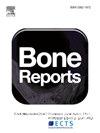综述了近年来纳米表面钛牙种植体的骨整合与抗腐蚀研究进展
IF 2.6
Q3 ENDOCRINOLOGY & METABOLISM
引用次数: 0
摘要
钛(Ti)因其卓越的生物相容性和生物力学特性而被广泛认为是构建牙种植体的首选材料。它在氧气的存在下迅速氧化,在植入物表面形成一层保护性的二氧化钛(TiO2)层,确保抗腐蚀。这种薄的氧化层对钛植入物的生物相容性起着至关重要的作用。然而,在机械载荷条件下,TiO2层的完整性会因种植体与骨组织之间的动态相互作用而受到破坏,导致局部损伤和随后的腐蚀。这种腐蚀削弱了植入物,并可能导致金属颗粒或离子释放到周围的活组织中。因此,无论是生物的还是机械的,腐蚀都是牙种植体出现故障的潜在催化剂。为了解决这一问题,广泛的研究集中在纳米级表面改性上,旨在提高钛牙种植体的耐久性和抗化学和电化学变化的能力。因此,这篇叙述性综述专门研究了钛牙种植体的纳米表面修饰,重点关注它们对耐腐蚀性、生物力学性能和骨整合的影响,将其与其他涉及钛种植体更广泛方面或一般腐蚀机制的综述区分开来。本文章由计算机程序翻译,如有差异,请以英文原文为准。

A narrative review of recent developments in osseointegration and anti-corrosion of titanium dental implants with nano surface
Titanium (Ti) is widely acknowledged as the top choice for constructing dental implants because of its remarkable biocompatibility and biomechanical characteristics. Its rapid oxidation in the presence of oxygen forms a protective titanium dioxide (TiO2) layer on the implants’ surface, ensuring resistance to corrosion. This thin oxide layer plays a crucial role in establishing the favorable biocompatibility of Ti implants. However, under mechanical loading conditions, the integrity of the TiO2 layer can be compromised through the dynamic interactions between the implant and bone tissue, leading to localized damage and subsequent corrosion. This corrosion weakens the implant and may result in the release of metallic particles or ions into the surrounding living tissues. Consequently, corrosion serves as a potential catalyst for the emergence of malfunctions in dental implants, whether biological or mechanical in nature. To address this issue, extensive research has focused on nanoscale surface modifications aimed at enhancing the durability and resistance to chemical and electrochemical changes exhibited by dental implants made from Ti. Hence, this narrative review specifically examines nano surface modifications of titanium dental implants, focusing on their effects on corrosion resistance, biomechanical performance, and osseointegration, distinguishing it from other reviews that address broader aspects of titanium implants or general corrosion mechanisms.
求助全文
通过发布文献求助,成功后即可免费获取论文全文。
去求助
来源期刊

Bone Reports
Medicine-Orthopedics and Sports Medicine
CiteScore
4.30
自引率
4.00%
发文量
444
审稿时长
57 days
期刊介绍:
Bone Reports is an interdisciplinary forum for the rapid publication of Original Research Articles and Case Reports across basic, translational and clinical aspects of bone and mineral metabolism. The journal publishes papers that are scientifically sound, with the peer review process focused principally on verifying sound methodologies, and correct data analysis and interpretation. We welcome studies either replicating or failing to replicate a previous study, and null findings. We fulfil a critical and current need to enhance research by publishing reproducibility studies and null findings.
 求助内容:
求助内容: 应助结果提醒方式:
应助结果提醒方式:


